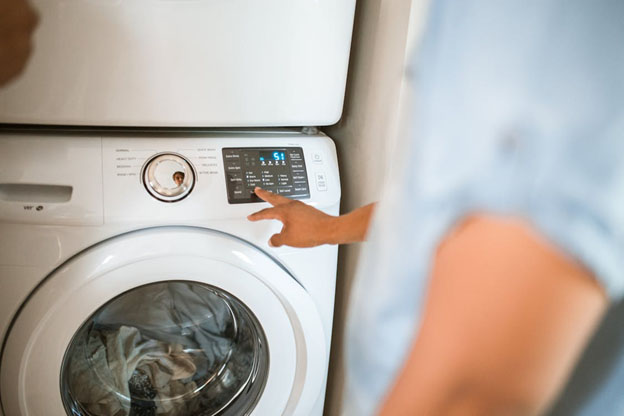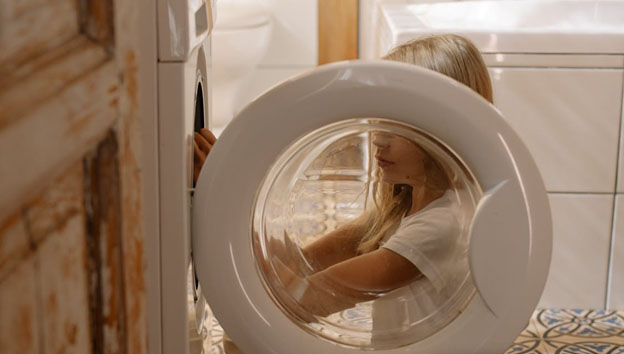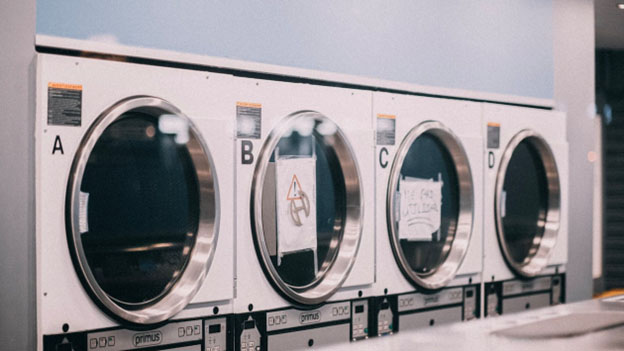
Front Loader vs Top Loader: Common Repair Issues for Each Type
Front loader vs top loader washing machines break down in completely different ways. Understanding these differences helps you spot problems early and know when to get professional help.
Both machines wash clothes well, but their designs create different weak points. Top loaders use agitators or impellers with simpler mechanics. Front loaders tumble clothes and have complex door seals and drainage systems. These design differences mean they fail in totally different ways.
Understanding the Basic Differences Between Front Loader and Top Loader Machines
Your washing machine's design determines which parts wear out fastest. Front loaders spin horizontally with a front door. This creates pressure on the rubber seal and drainage pump. Top loaders open from above and spin vertically. This puts different stress on bearings and transmission parts.
Water usage patterns differ a lot between the two types. Front loaders use less water but need precise sensors and pressure switches. Top loaders fill with more water and use different valve systems. These differences directly affect which parts fail most often.
Temperature control works differently too. Front loaders often have sophisticated heating elements for wash cycles. Top loaders usually rely more on hot water from your home system. This changes how temperature problems show up.
Front loader vs top loader washing machines have distinct repair challenges based on their designs. This guide covers common problems for each type, from door seal failures to agitator issues, helping you identify when professional repair service is needed.

Common Front Loader Repair Issues
Front loading machines are popular in Australian homes. But they come with specific problems that owners need to watch for. These machines have lots of technology packed in, which means more parts that can break.
Door Seal and Gasket Problems
The rubber door seal on front loaders gets beat up constantly. Water, detergent, and clothes rub against it all the time. Eventually it tears, cracks, or loses its shape. Water starts pooling at the bottom of the seal. This creates perfect conditions for mold and mildew.
Most people smell something musty before they see actual seal damage. Small tears turn into major leaks fast. These leaks can damage your flooring. The seal also catches stuff like coins, buttons, and small items. These can puncture the rubber from inside.
You need specific tools to replace door seals correctly. Wrong installation causes immediate leaks or early seal failure. A professional appliance repair specialist fixes hundreds of these cases every year. They work across Melbourne, Sydney, Brisbane, Adelaide, Perth, Canberra, and other metros in Australia.
Drainage Pump Blockages and Failures
Front loaders rely completely on drainage pumps to remove water. Gravity can't help with horizontal drums. These pumps get clogged all the time. Lint, hair, small objects, and detergent buildup are common culprits. A blocked pump stops proper draining. Your clothes end up soaking wet at the end.
Strange grinding or humming noises during draining often mean pump trouble. Sometimes the impeller inside breaks or gets jammed by stuff. Partial blockages make the pump work harder. This creates heat and eventually burns out the motor.
Most front loaders have a filter you should clean monthly. But many owners never touch it. Years of junk can completely shut down the drainage system. Professional cleaning and pump replacement usually fix these problems quickly.
Bearing Deterioration and Loud Noises
The drum bearings in front loaders support a lot of weight. They spin at high speeds constantly. These bearings sit behind the drum and wear down gradually. You'll hear a rumbling sound during the spin cycle first. It gets louder over time.
Worn bearings let the drum move slightly off center. This creates vibration that damages other parts. If you ignore failed bearings, they can crack the drum spider. They can also damage the motor. Fixing this requires taking apart most of the machine.
Water leaking past worn seals often reaches the bearings. This speeds up their breakdown. Hard water in some Australian areas makes this worse. Bearing replacement is one of the harder front loader repairs.
Control Board and Electronic Failures
Front loaders have sophisticated electronic control boards. These manage wash cycles, temperatures, and spin speeds. They can fail from power surges, moisture, or just age.
Common signs of control board problems include:
- Display going blank without warning
- Cycles refusing to start despite power being on
- Machine stopping halfway through a wash
- Error codes flashing that won't clear
- Buttons not responding when pressed
- Random cycle changes during operation
Humidity causes corrosion on circuit connections over time. Some models have known issues with specific board parts. These fail predictably after certain years.
You need to test voltage levels and signals to diagnose control board problems. This goes way beyond typical DIY fixes. Replacement boards must match your exact model. They often need programming to work right.

Common Top Loader Repair Issues
Top loading machines have their own set of problems. These differ a lot from front loaders. Top loaders are generally simpler in design. But they still have specific failures that mess up your laundry routine.
Agitator and Transmission Problems
The agitator in traditional top loaders does the hard work. It moves clothes through water. These parts develop cracks over time. They lose their agitating dogs. These are small plastic pieces that create back and forth motion. They can also strip their internal gears. Clothes stop getting clean when the agitator can't move right.
The transmission connects the motor to the agitator and spin basket. It contains multiple gears and clutches that wear down. Strange clunking sounds often point to transmission trouble. Failure to agitate is another sign. Sometimes transmissions leak oil. This creates a burning smell during operation.
Newer top loaders without agitators use impeller systems instead. These have different failure modes. Impellers can crack or become loose on their mounting. This reduces how well they wash. These systems need proper water levels and load balance.
Lid Switch and Safety Lock Malfunctions
Top loaders won't start if the lid switch fails. They won't keep running either. This safety feature prevents injuries. But it becomes annoying when it breaks. The switch itself wears out from repeated opening and closing. The strike point on the lid can also get misaligned.
Some modern top loaders have lid locks. These engage during certain cycle phases. The locks can jam closed and trap your laundry inside. Or they fail to engage and stop the cycle. Moisture near the switch causes corrosion. This affects how it works.
Replacing lid switches is usually straightforward. But you need to remove the control console to reach them. The appliance repair technicians in Australia handle these fixes all the time. They offer same day service too.
Water Level Sensor and Fill Problems
Top loaders need accurate water level detection to work right. Pressure switches or air dome tubes can leak or get blocked. This prevents correct water fill. Your machine might overfill and flood. Or it might underfill and not clean clothes properly.
Hard water deposits clog the small tubes. These tubes connect the water level sensor to the tub. Air leaks in these tubes confuse the sensor. Some electronic models use pressure transducers instead of mechanical switches. These fail differently but cause similar problems.
Fill valve problems make water level issues worse. These valves have screens that catch stuff from water lines. These screens gradually clog up. You might see weak water pressure during filling. Or the machine might fill continuously and never stop. Both mean valve problems.
Drive Belt and Motor Coupling Issues
Many top loaders use drive belts. These transfer power from the motor to the transmission. Belts stretch, crack, or break completely over time. A broken belt means the drum won't spin at all. You might still hear the motor running though. Squealing noises during operation often mean a slipping belt. It needs replacement.
Direct drive top loaders skip the belt. They use a motor coupling instead. These plastic and rubber couplings absorb shock. They protect the motor if something jams the drum. They wear down slowly and eventually break. This causes the same problem as a broken belt.
You need to access the underside or back to replace belts and couplings. Belt tension must be set correctly. Wrong tension causes premature wear or motor strain. Wrong belt sizes or bad installation leads to quick failure.
When to Call Professional Help
Some repairs clearly need professional help. Water leaking from beneath the machine is one sign. Loud grinding noises are another. Error codes that won't clear need expert diagnosis. Complete failure to start needs checking too. Trying complex repairs without proper tools often causes more damage.
National Appliance Repairs offers same day service throughout Australian metro areas. They fix both front loader and top loader problems. Their certified techs carry common parts for immediate repairs. They provide 12 month warranties on parts too. Understanding your machine type helps you explain problems clearly. This speeds up the repair process when you call.
Both front loader vs top loader machines work great for households. But knowing their specific weak points helps you catch problems early. This helps you avoid emergency breakdowns at bad times.
|